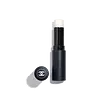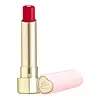What's inside
What's inside
 Key Ingredients
Key Ingredients

 Benefits
Benefits

 Concerns
Concerns

 Ingredients Side-by-side
Ingredients Side-by-side

Dicaprylyl Carbonate
EmollientDiisostearyl Malate
EmollientIsononyl Isononanoate
EmollientSynthetic Wax
AbrasivePolymethylsilsesquioxane
Jojoba Esters
EmollientEthylene/Propylene Copolymer
AbrasiveEthylhexyl Palmitate
EmollientAluminum Starch Octenylsuccinate
AbsorbentHydrogenated Castor Oil
EmollientButyrospermum Parkii Butter
Skin ConditioningStearalkonium Hectorite
Gel FormingTribehenin
EmollientTocopheryl Acetate
AntioxidantPropylene Carbonate
SolventSorbitan Isostearate
EmulsifyingDimethicone
EmollientParfum
MaskingTocopherol
AntioxidantPalmitoyl Tripeptide-1
Skin ConditioningBHT
AntioxidantCitric Acid
BufferingDicaprylyl Carbonate, Diisostearyl Malate, Isononyl Isononanoate, Synthetic Wax, Polymethylsilsesquioxane, Jojoba Esters, Ethylene/Propylene Copolymer, Ethylhexyl Palmitate, Aluminum Starch Octenylsuccinate, Hydrogenated Castor Oil, Butyrospermum Parkii Butter, Stearalkonium Hectorite, Tribehenin, Tocopheryl Acetate, Propylene Carbonate, Sorbitan Isostearate, Dimethicone, Parfum, Tocopherol, Palmitoyl Tripeptide-1, BHT, Citric Acid
Polyglyceryl-2 Triisostearate
EmulsifyingDiisostearyl Malate
EmollientHydrogenated Poly(C6-14 Olefin)
EmollientPolybutene
Pentaerythrityl Tetraisostearate
EmollientBis-Diglyceryl Polyacyladipate-2
EmollientPolyethylene
AbrasiveOctyldodecanol
EmollientSynthetic Fluorphlogopite
Synthetic Wax
AbrasiveMalpighia Glabra Fruit Extract
Skin ConditioningEuphorbia Cerifera Wax
Caprylic/Capric Triglyceride
MaskingIsohexadecane
EmollientButyrospermum Parkii Butter
Skin ConditioningSodium Hyaluronate
HumectantTripeptide-1
Skin ConditioningDisteardimonium Hectorite
StabilisingPropylene Carbonate
SolventEthylene/Propylene Copolymer
AbrasiveEthylene/Propylene/Styrene Copolymer
Butylene/Ethylene/Styrene Copolymer
Xanthan Gum
EmulsifyingPolyhydroxystearic Acid
EmulsifyingCaprylyl Glycol
EmollientHexylene Glycol
EmulsifyingParfum
MaskingPentaerythrityl Tetra-Di-T-Butyl Hydroxyhydrocinnamate
AntioxidantPhenoxyethanol
PreservativeCI 77891
Cosmetic ColorantCI 77491
Cosmetic ColorantCI 77492
Cosmetic ColorantCI 77499
Cosmetic ColorantCI 42090
Cosmetic ColorantCI 15850
Cosmetic ColorantCI 45410
Cosmetic ColorantCI 73360
Cosmetic ColorantCI 19140
Cosmetic ColorantPolyglyceryl-2 Triisostearate, Diisostearyl Malate, Hydrogenated Poly(C6-14 Olefin), Polybutene, Pentaerythrityl Tetraisostearate, Bis-Diglyceryl Polyacyladipate-2, Polyethylene, Octyldodecanol, Synthetic Fluorphlogopite, Synthetic Wax, Malpighia Glabra Fruit Extract, Euphorbia Cerifera Wax, Caprylic/Capric Triglyceride, Isohexadecane, Butyrospermum Parkii Butter, Sodium Hyaluronate, Tripeptide-1, Disteardimonium Hectorite, Propylene Carbonate, Ethylene/Propylene Copolymer, Ethylene/Propylene/Styrene Copolymer, Butylene/Ethylene/Styrene Copolymer, Xanthan Gum, Polyhydroxystearic Acid, Caprylyl Glycol, Hexylene Glycol, Parfum, Pentaerythrityl Tetra-Di-T-Butyl Hydroxyhydrocinnamate, Phenoxyethanol, CI 77891, CI 77491, CI 77492, CI 77499, CI 42090, CI 15850, CI 45410, CI 73360, CI 19140
Ingredients Explained
These ingredients are found in both products.
Ingredients higher up in an ingredient list are typically present in a larger amount.
This ingredient is also known as shea butter. It is an effective skin hydrator and emollient.
Emollients help soothe and soften your skin. It does this by creating a protective film on your skin. This barrier helps trap moisture and keeps your skin hydrated. Emollients may be effective at treating dry or itchy skin.
Shea butter is rich in antioxidants. Antioxidants help fight free-radicals, or molecules that may harm the body. It is also full of fatty acids including stearic acid and linoleic acid. These acids help replenish the skin and keep skin moisturized.
While Shea Butter has an SPF rating of about 3-4, it is not a sunscreen replacement.
Shea butter may not be fungal acne safe. We recommend speaking with a professional if you have any concerns.
Learn more about Butyrospermum Parkii ButterDiisostearyl Malate is an emollient and most often used in lip products. It comes from isostearyl alcohol, a fatty acid, and malic acid, an AHA.
As an emollient, Diisostearyl Malate helps create a thin film on your skin to trap moisture in. This helps keep your skin soft and smooth.
Ethylene/Propylene Copolymer is an exfoliant.
Parfum is a catch-all term for an ingredient or more that is used to give a scent to products.
Also called "fragrance", this ingredient can be a blend of hundreds of chemicals or plant oils. This means every product with "fragrance" or "parfum" in the ingredients list is a different mixture.
For instance, Habanolide is a proprietary trade name for a specific aroma chemical. When used as a fragrance ingredient in cosmetics, most aroma chemicals fall under the broad labeling category of “FRAGRANCE” or “PARFUM” according to EU and US regulations.
The term 'parfum' or 'fragrance' is not regulated in many countries. In many cases, it is up to the brand to define this term.
For instance, many brands choose to label themselves as "fragrance-free" because they are not using synthetic fragrances. However, their products may still contain ingredients such as essential oils that are considered a fragrance by INCI standards.
One example is Calendula flower extract. Calendula is an essential oil that still imparts a scent or 'fragrance'.
Depending on the blend, the ingredients in the mixture can cause allergies and sensitivities on the skin. Some ingredients that are known EU allergens include linalool and citronellol.
Parfum can also be used to mask or cover an unpleasant scent.
The bottom line is: not all fragrances/parfum/ingredients are created equally. If you are worried about fragrances, we recommend taking a closer look at an ingredient. And of course, we always recommend speaking with a professional.
Learn more about ParfumThis ingredient is a solvent. It helps dissolve active ingredients and alter the texture of products.
Propylene Carbonate is commonly used in makeup and with clay, such as montmorillonite or bentonite.
Studies show this ingredient to be safe for cosmetics. When it is undiluted, it can cause skin irritation. (It is always diluted in skincare and makeup). This ingredient is water-soluble.
Propylene Carbonate is created from propylene glycol and carbonic acid.
Learn more about Propylene CarbonateSynthetic Wax is created from fossil fuels such as natural gas. It is used to enhance texture, adjust pH, and as an occlusive.
It may also be used as an abrasive ingredient to exfoliate the skin.
Synthetic Wax may not be fungal acne safe.
Learn more about Synthetic Wax